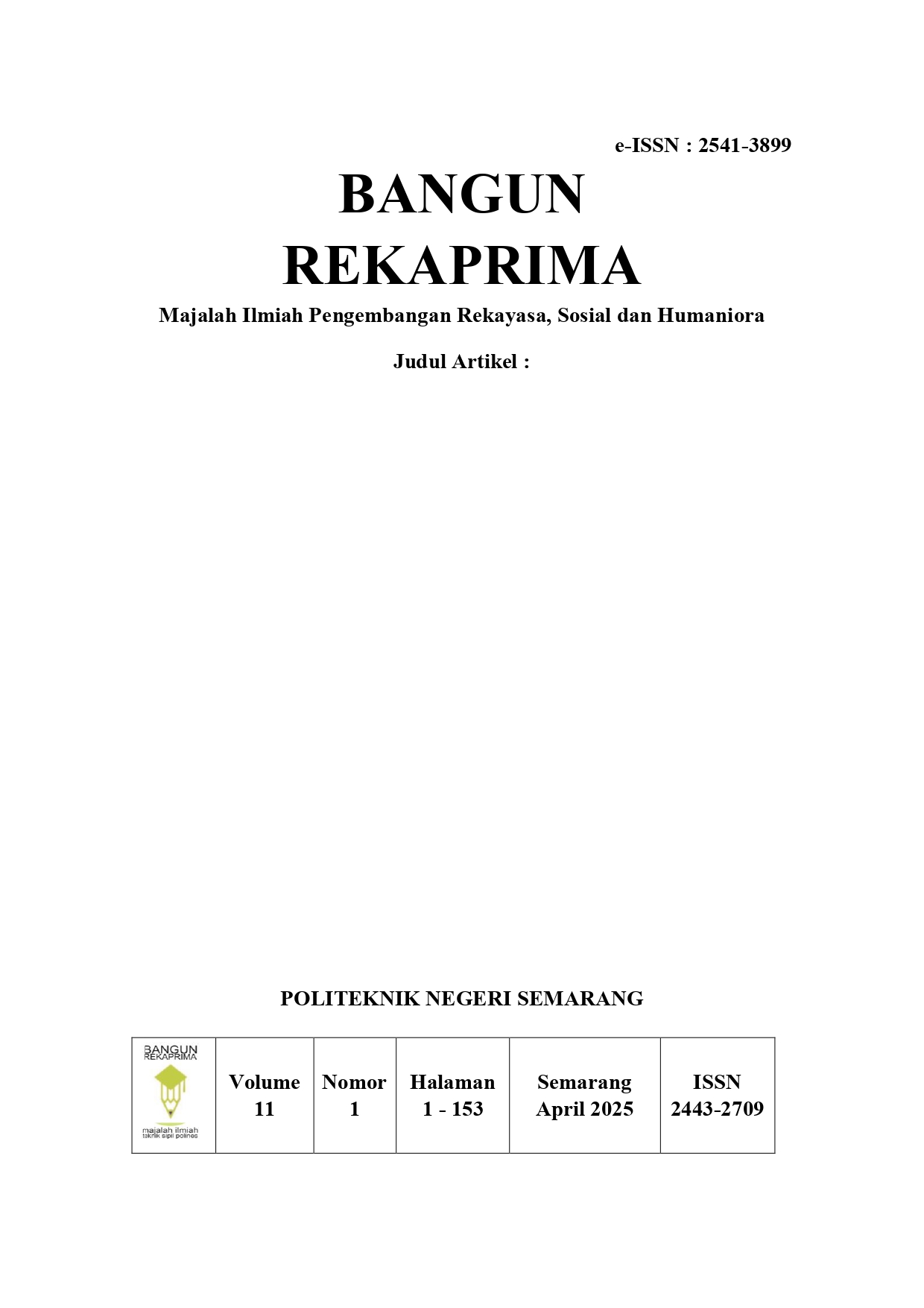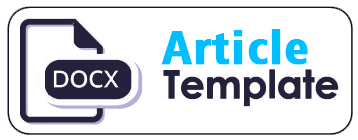PENDEKATAN KUANTITATIF DALAM PEMETAAN KENYAMANAN JALAN MENGGUNAKAN INTERNATIONAL ROUGHNESS INDEX (IRI) KENDARAAN RODA DUA
PENDEKATAN KUANTITATIF DALAM PEMETAAN KENYAMANAN JALAN MENGGUNAKAN INTERNATIONAL ROUGHNESS INDEX (IRI) KENDARAAN RODA DUA
DOI:
https://doi.org/10.32497/bangunrekaprima.v11i1.6389Keywords:
IRI, Tembalang District, Road Sections, MaintenanceAbstract
The condition of a road section can be known using the IRI (International Roughness Index) value. IRI is the value of the unevenness of the road surface and is determined by the total length of elevation and subsidence of the road surface per unit length. This study aims to evaluate the conditions of road sections in Tembalang District using IRI. IRI data collection using a technology-based vibration sensor method using the RoadLabPro application on a smartphone installed on a two-wheeled vehicle, effectively reaches remote, narrow areas, and various road conditions with high flexibility. The collected data is analyzed to classify road conditions into Good (IRI ≤ 4.0), Moderate (4.1≤IRI≤8.0), Lightly Damaged (8.1≤IRI≤12.0), or Severely Damaged (12≤ IRI). Of the 31 road sections tested, 54.84% were in the Good category with an average IRI value of 3.48 m/km, and 45.16% were in the Moderate category with an average IRI value of 4.89 m/km. Analysis using QGIS serves to map road conditions, identify locations with high IRI values that require repair. The results of this study are expected to be used for more effective road maintenance planning and management, contribute to improving the quality of road infrastructure in Tembalang District, and support decision making to improve the comfort and safety of road users.
References
Abdelaziz, N., El-Hakim, R., El-Badawy, S., & Afify, H. (2020). International Roughness Index prediction model for flexible pavements. International Journal of Pavement Engineering, 21, 88 - 99.
Du, Y., Liu, C., Wu, D., & Jiang, S. (2014). Measurement of International Roughness Index by Using -Axis Accelerometers and GPS. Mathematical Problems in Engineering, 2014, 1-10.
Kropác, O., & Múčka, P. (2005). Be Careful When Using The International Roughness Index As An Indicator Of Road Unevenness. Journal of Sound and Vibration, 287, 989-1003.
Mirtabar, Z., Golroo, A., Mahmoudzadeh, A., & Barazandeh, F. (2020). Development of a crowdsourcing-based system for computing the international roughness index. International Journal of Pavement Engineering, 23, 489 - 498.
Piryonesi, S., & El-Diraby, T. (2021). Examining The Relationship Between Two Road Performance Indicators: Pavement Condition Index And International Roughness Index. Transportation geotechnics, 26, 100441.
Prayoga, I., Esariti, L., & Dewi, D. (2013). The Identification of Early Gentrification in Tembalang Area, Semarang, Indonesia. Environment and Urbanization Asia, 4, 57 - 71.
Sayers, M. (1995). On The Calculation Of International Roughness Index From Longitudinal Road Profile. Transportation Research Record, 1-12.
Shivananda, P., & Khatua, S. (2022). Study on International Road Roughness index (IRI) using Smart phone application from REVA University to Kodigehalli gate, Bangalore, India. IOP Conference Series: Materials Science and Engineering, 1255.
Sidess, A., Ravina, A., & Oged, E. (2020). A model for predicting the deterioration of the international roughness index. International Journal of Pavement Engineering, 23, 1393.
Downloads
Published
Issue
Section
License

This work is licensed under a Creative Commons Attribution 4.0 International License.
The copyright of the received article shall be assigned to the journal as the publisher of the journal. The intended copyright includes the right to publish the article in various forms (including reprints). The journal maintains the publishing rights to the published articles.

This work is licensed under a Creative Commons Attribution 4.0 International License.






